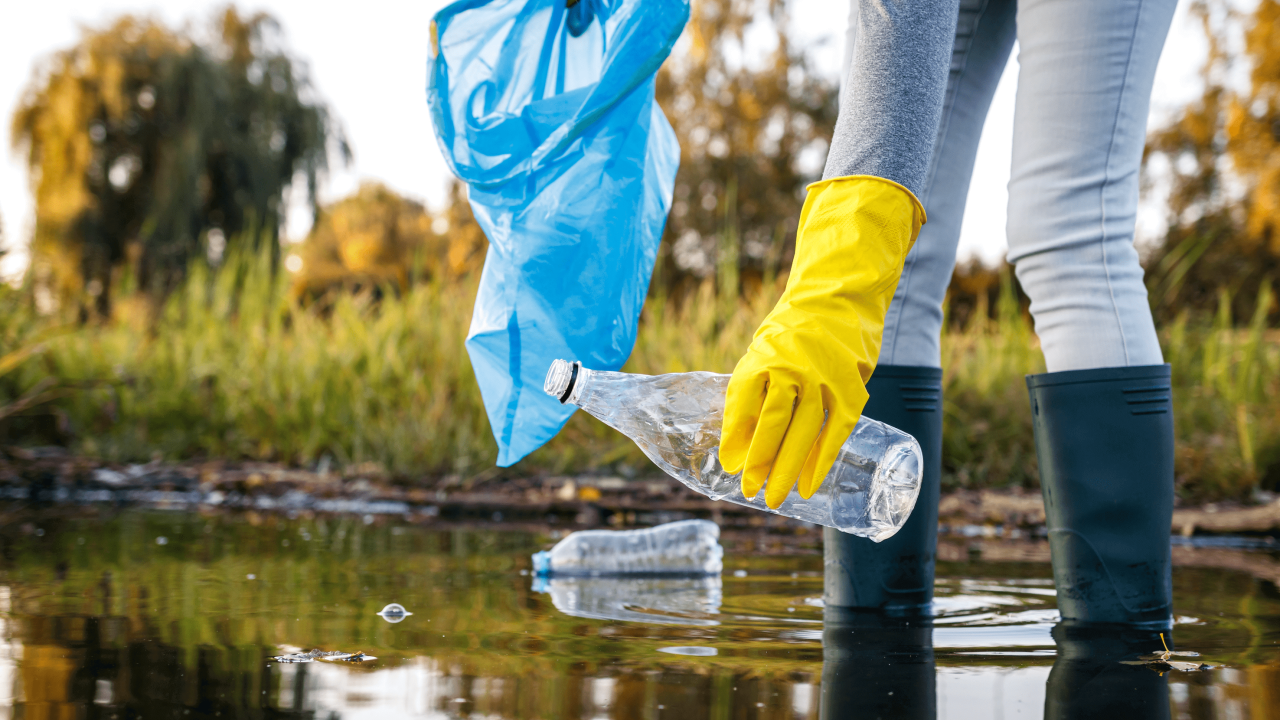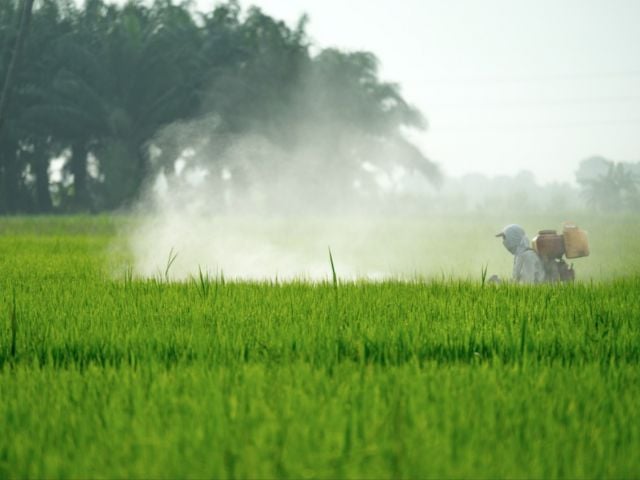
From Milwaukee to Buffalo, the Great Lakes span over 500 miles and contain 84 percent of North America’s surface freshwater. But the iconic lakes – and the wildlife they’re home to – may be in danger.
The lakes are polluted with alarming amounts of the tiny plastic particles known as microplastics. If left unchecked, microplastic pollution in the lakes could harm the communities that rely on them for food, water and income. The contamination threatens the 300,000 jobs they support, their ecosystem of over 3,500 species of plants and animals, and the drinking water supply of more than 40 million people.
Ninety percent of water samples taken from the Great Lakes over the past 10 years are contaminated with microplastics at levels that are unsafe for wildlife, according to a recent study from the University of Toronto.
Where microplastics come from
Microplastics are defined as plastic particles under 5 millimeters in size. They can be intentionally manufactured or formed from the degradation of larger plastics.
Fibers from clothing or debris from larger pieces of plastic can contribute to microplastic pollution in waterways like the Great Lakes. This pollution can also come from “nurdles,” small pieces of plastic used to produce larger plastic products. The breakdown of single-use plastics is a major contributor to microplastic pollution.
Microplastics end up in the lakes from many sources, including city water runoff, heavy winds and rain storms. Because they’re so small and come from many different sources, they take a lot of time for policymakers and scientists to study.
Possible health risks
Microplastics have been found in human blood, organs and even breast milk. We don’t know exactly how they affect human health, but the harm they can cause wildlife has been well documented.
It can come from material pollution and the chemical pollution that microplastics take up and release. Microplastics have been known to absorb chemicals like flame retardants, the toxic “forever chemicals” known as PFAS, and many others absorbed by the plastic and then ingested by wildlife.
Studies have also shown that animals that have come in contact with microplastics may experience developmental delays, reduced mental processing, infertility and weakened immune systems.
Widespread pollution
An estimated 22 million pounds of plastic enter the Great Lakes every year. A study of three Lake Michigan tributaries discovered that 85 percent of the fish sampled had microplastics in their digestive tracts.
Microplastic pollution can be found in every part of the food web, including mussels, algae, invertebrates and birds. Ingested microplastics can fill up an animal’s stomach, causing it to think it’s full without providing any nutrition.
Because microplastics have become so ubiquitous in water environments, animals do not have to actively eat microplastics to become contaminated. They can absorb plastic through drinking lake water, ingesting sediment or simply coming in contact with it as it floats through the ecosystem.
Contaminated fish and other lake-dwelling animals are consumed by people throughout the Great Lakes region and beyond, with unknown health consequences.
Tackling plastic pollution
Because microplastics are so widespread, they have been hard to regulate. Some cities have begun to address this issue. Areas like Chicago have started installing filters on storm drains and sewage systems to catch macro and microplastics before they enter the water systems.
But much of the microplastic pollution in the Great Lakes comes from airborne particles, not water runoff, making these filters a less effective protective measure.
Many experts say we must use less plastic if we are to curb the flow of microplastics into the Great Lakes. The U.S. is among the world’s biggest producers of plastic waste, and the amount we use is only expected to increase.
Instead of trying to get manufacturers to clean up plastic pollution, experts urge them to cut back on the amount of plastic they produce in the first place.
International efforts
The pollution researchers are beginning to uncover in this region is only a small piece of the microplastic puzzle. While ocean plastic pollution is often in the spotlight, plastics in freshwater are just as pervasive. Only about 3 percent of the earth’s surface water is freshwater, so it’s crucial to make the protection of these ecosystems a priority.
The European Union prohibits intentionally added microplastics in all products, with the goal of reducing microplastic waste by 30 percent by 2030. The ban includes microplastics in cosmetics, detergents, fertilizers, glitter, toys and medicine, among other products. The timeline for the EU’s ban on these products ranges anywhere from four to 12 years, depending on the availability of alternatives, and it affects both products the EU imports from the U.S. and those made in the EU.
The U.S. has also taken some steps, for example, with a ban on “rinse off” microplastics, in 2015 – those added to products that will get washed away. Any product that contains microplastic beads that get washed down the drain, like facial cleanser or toothpaste, is considered a rinse-off product.
But the U.S. needs to do more to ensure meaningful change.
How you can help
There are some steps you can take to help reduce the use of plastic and, in turn, fight microplastic pollution. You can:
- Reduce personal plastic consumption. For instance, dispose of plastics properly and lower your consumption of single-use plastics like straws and bottles.
- Perform car maintenance regularly. Tire wear and other car-related mechanical processes can release microplastics into the atmosphere, especially with poorly maintained tires.
- Use public or alternative transportation when possible. This is a great way to reduce the amount of microplastics released from driving.
- Rethink how you do your laundry. Microplastics are released in mass during the laundry process, especially by your dryer. Polymer fabrics like acrylic, polyester and nylon can shed them in the washing machine. Doing laundry less often, air drying or using a washing bag or filter can help.
###



